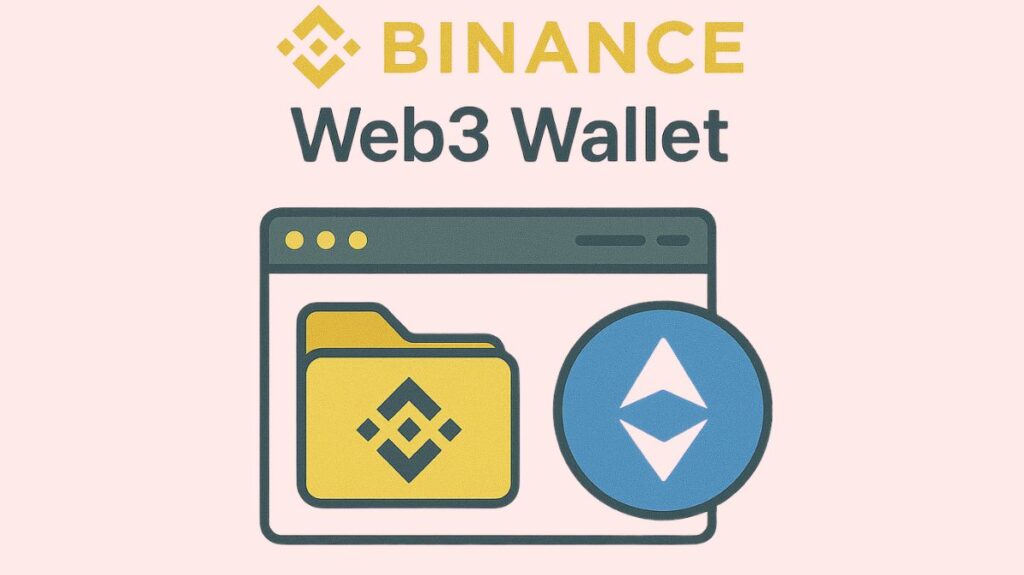Dive into the Binance Web3 Wallet, a user-friendly gateway to the decentralized web. Understand its features like integrated DEX access, early token launch opportunities, and secure asset management for the evolving Web3 ecosystem.
Binance Wallet
An “Binance Wallet” can be any of several wallet services provided by Binance, one of the biggest cryptocurrency exchanges in the world. Users are able to store, transmit, and receive cryptocurrency with these services, which are intended to make handling digital assets simple and effective. Their custodial or non-custodial status is the primary difference between them.
Binance Exchange Wallet (Custodial)
- The most popular “Binance wallet” among exchange users, it is generated instantly when creating a Binance account.
- Custodial Nature: Your private keys are held by Binance while using this wallet, so you don’t have complete, direct control over your money. You are entrusting Binance with the responsibility of protecting and overseeing your valuables. Your money is still vulnerable to the dangers of a centralized organization, such a hack or legal troubles, even if Binance uses strong security methods like cold storage and two-factor authentication (2FA).
- Convenience & Features: It is incredibly user-friendly, enabling smooth cryptocurrency trading, buying, and selling on the Binance market. Every service offered by Binance, including futures, staking, and spot trading, is connected with it.
Binance Web3 Wallet (Non-Custodial)

With the goal of giving customers greater control over their assets, this more recent product is seamlessly incorporated within the Binance app.
Non-Custodial Nature: A non-custodial wallet is characterised by the fact that you and no one else have complete control over your private keys. Your money cannot be accessed by Binance using this wallet.
Keyless Multi-Party Computation (MPC) Technology:: Advanced MPC technology is used in the Binance Web3 Wallet to streamline the user experience and eliminate the requirement for a conventional seed phrase. Three distinct “key-shares” are created from your private key by this technology:
- Binance has taken security of Share 1.
- Your device has Share 2 saved on it.
- You may specify a recovery password to encrypt Share 3, and it is backed up to your own cloud storage (like Google Drive or iCloud).
- Access to your wallet requires at least two of the three key-shares. Binance can’t access your wallet without you since they only own one share.
- The recovery password and device security, however, are entirely your responsibility. Binance cannot restore your assets, and you won’t be able to get back in if you lose your smartphone or erase the Binance app and forget your recovery password. Share 3 must be backed up before utilising the wallet.
Web3 Access: Through this wallet, you may engage with decentralized applications (dApps), take part in Decentralized Finance protocols, and manage NFTs, serving as a gateway to the larger Web3 ecosystem.
Emergency Export Function: The “Emergency Export” feature of the Binance Web3 Wallet enables users to export their private keys in case they need to move. Although the Binance Web3 Wallet is rendered unavailable when it is launched and keys are exported, this feature reaffirms the dedication to user autonomy and control.
Setting Up: To create the Binance Web3 Wallet, download the Binance app, sign in, navigate to the [Wallets] section, select the [Web3] option, and then select [Create Wallet] or [Import Wallet].
Trust Wallet (Non-Custodial)
Binance purchased the well-known, stand-alone mobile bitcoin wallet Trust Wallet.
Non-Custodial Nature: You have complete control over your private keys, which are usually represented by a 12- or 24-word recovery phrase (seed phrase), using Trust Wallet, which is non-custodial like the Binance Web3 Wallet.
Multi-Chain Support & dApp Browser: In addition to supporting hundreds of coins and tokens and a large number of blockchains, it has an integrated dApp browser that allows users to access decentralized apps.
Independence: Trust Wallet is used independently and does not require KYC (Know Your Customer) or be connected to a Binance exchange account.
Essentially, your demands determine which Binance wallet is best for you. The Binance Exchange Wallet places a high value on trading convenience. Those who want to interact with the larger decentralized world of cryptocurrency, NFTs, and DeFi and who want greater control over their assets can use the Binance Web3 Wallet and Trust Wallet. Simple, safe, and profitable are the goals of every Binance wallet. Inactive cryptocurrency can also be put to use by looking for ways to increase the yield on your holdings.
Important Considerations
Your investment may lose value over time due to the volatility of digital asset pricing.
The security of your device and recovery data is entirely your responsibility when using a self-custody wallet. Binance cannot assist you in recovering your funds if you lose access.
| Feature | Binance Exchange Wallet | Binance Web3 Wallet | Trust Wallet |
| Type | Custodial | Non-custodial (MPC) | Non-custodial (Seed Phrase) |
| Private Keys | Binance holds them | User holds key shares | User holds them |
| Control | Binance has control | You have full control | You have full control |
| Use Case | Trading on the Binance exchange | Interacting with Web3 and DeFi | General multi-chain crypto management |
| Integration | Fully integrated with Binance exchange services | Integrated into the Binance app | Standalone app |
| Security Risk | Centralized entity risk | Responsibility for securing key shares | Responsibility for securing seed phrase |
